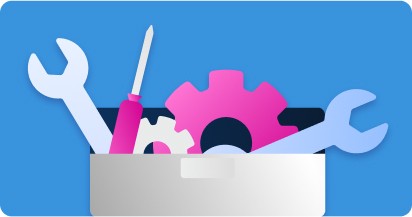
Browse by Popular

Domain Name
- What is a domain name?Eligibility criteria for registering .AU domain namesPremium domain names explained

Web Hosting
View All
Email Hosting
View All
Google Workspace
- Getting Started with Google WorkspaceGoogle Workspace support resourcesTransferring an existing Google Workspace service to VentraIP

Account
- How do I reset my VIPcontrol password?How do I create a VentraIP account?How can I see who accessed my VentraIP account?

Troubleshooting
- How do I clear my browser cache?Troubleshooting a ‘500 internal server' errorTroubleshooting with a ping test
Copying addon domain data between cPanel accounts
Before Starting
Because there are so many different types of websites out there, we cannot provide a comprehensive guide detailing every scenario you may run into. For this reason, we’ve provided the basic steps you need to take to move your website files and associated databases between cPanel accounts. Some platforms such as WordPress or Magento for example may require extra steps to get things 100% working under the new cPanel account.
If things are not working once you move the website files and associated databases, you may need to consult a web developer for further assistance.
Downloading the website’s files
The first part of this process is to download the website content, starting with the website’s files. Here are the steps:
- Determine where the addon domain’s website files are located by checking the Document Root under cPanel > Addon Domains

- Once you have this information, you can download the website’s files using cPanel’s inbuilt File Manager or via FTP
- To download via FTP, follow our guide on how to manage files via FTP
- To download the files using cPanel’s File Manager, you must:
- Access the cPanel file manager under cPanel > File Manager
- Navigate to the folder in which the website’s files are stored
- Click on the first file/folder in the list, then hold SHIFT and click on the last file/folder. Right-click on the highlighted files and folders, then click Compress
- Choose any of the compression methods, and set the file name to whatever you like.
- Right-click on the compressed file, and click Download
Download the website’s databases
If your website has some databases associated with it, you can download it using PHPMyAdmin. Here are the steps:
- Login to cPanel
- Click on PHPMyAdmin under Databases
- Click on Export
- Under Export Method select Custom
- Select the database(s) you want to export
- Click Go at the bottom of the page (this will download a file called localhost.sql)
Uploading the files and databases to the new cPanel account
Before proceeding, you need to set up the addon domain in the new cPanel account under cPanel > Addon Domains.

To upload the files into the new account, you need to place them in the Document Root for the addon domain in the new account. Here are the steps:
- To upload the files via FTP, follow our guide on how to manage FTP files
- To upload the files using cPanel’s File Manager, you need to:
- Navigate to cPanel > File Manager
- Open the folder for the Addon Domain, which you can see under Document Root under cPanel > Addon Domains
- Click Upload and select the compressed file you downloaded earlier.
- Once the file is uploaded, make sure it’s in the addon domain’s Document Root.
- Right-click on the file and click Extract
Once you have done that, you can upload the database you exported (if you did this). By following these steps:
- Create a new MySQL database and database user inside cPanel, by following this guide.
- Navigate to cPanel > PHPMyAdmin
- Click on the database you want to import the database backup you took earlier into (this will be to the left of the page)
- Click Import
- Click Choose File under File to import
- Click Go at the bottom of the page
What next?
From here, there may be some extra steps you need to take in order to make the website work. These steps will differ from website to website.
You can test the website on the new cPanel account by following these steps. And these steps to point the domain at the new hosting service.
